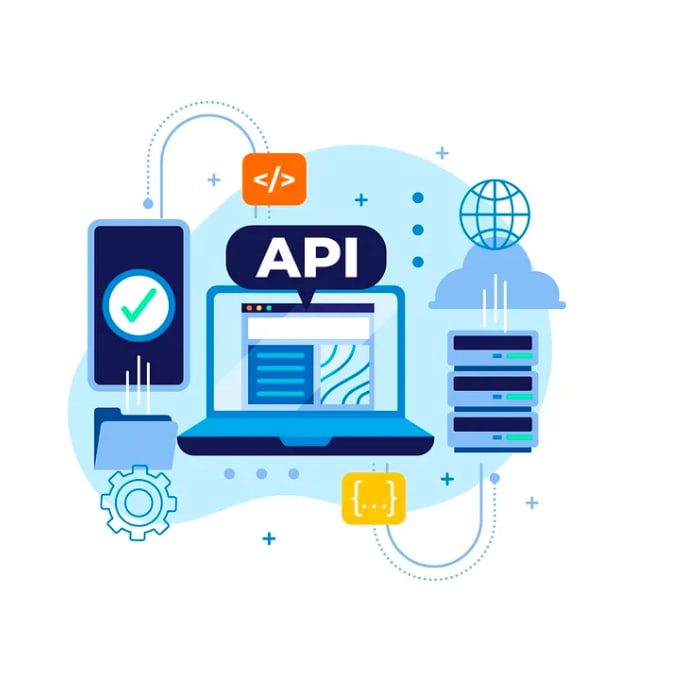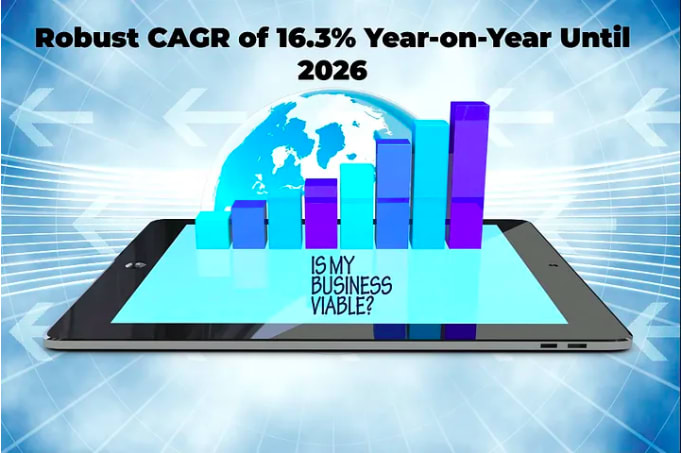
This article elucidates the API Models that organisations are embracing during their journey of digital transformation: unbundling, outside-in, and ecosystem models.
Anticipated Double-Digit Surge in API Model Economy to Persist Until 2026
By 2026, estimations (according to the IDC Spending Guide, which envisions worldwide digital transformation investments reaching $3.4 trillion in 2026) indicate that organizations will allocate $3.4 trillion toward digital transformation (DX) with a five-year CAGR of 16.3%. This projection takes into account various challenges, such as supply chain bottlenecks, soaring inflation, political unrest, and the looming threat of a recession. The advantages of DX are manifold, encompassing intuitive artificial intelligence, robust operational efficiency, and exceptional customer experience. These factors play a crucial role in enabling businesses to overcome unforeseen obstacles like the COVID-19 pandemic.
Application Programming Interfaces (APIs) serve as a pivotal component of DX, with every noteworthy company investing substantial resources in devising API models. Although the "API economy" is relatively young, having emerged just over a decade ago, several enterprises have rightly recognised that their future success hinges on the swift adoption of APIs.

Companies that Embrace API Models Lead the Way in Digital Transformation
The benefits of the API economy are not limited to the IT industry; opportunities abound in every sector. Any business with an app or website already possesses most of the necessary elements to provide its customers with API models. However, caution must be exercised, as companies should not haphazardly expose their APIs to the internet. The most successful companies adopt a strategic approach known as "ways of the API." Let us explore the three primary API models through some illustrative case studies.
Twilio's Focus on Web APIs to Attain Unicorn Status
While there is little dispute that the 21st century is a digital era, legacy companies have struggled to keep pace with ongoing digital transformations. These companies need to overcome not only technological hurdles but also entrenched ways of thinking. Digital transformation is thus a process that involves both organizational change and a shift in mindset. Visionary leaders create digital solutions tailored specifically to their line of business.
For instance, Twilio recognized the immense potential during the Apple App Store era and honed in on smartphone offerings such as billing, data, and text. They developed web APIs for cloud-based calls and text messaging. Twilio's strategic moves, including the recent acquisition of Segment for $3.2 billion (Twilio — Twilio to Acquire Segment, the Market-leading Customer Data Platform), bode well for other companies seeking to follow suit.

Legislation and Market Forces Propel API Model Adoption
Certain industries, like banking and healthcare, are expected to shift towards API technology due to regulatory requirements. Telecommunications and media and entertainment sectors, on the other hand, are driven by the need for interoperability and disruptive innovation. API transformation has the potential to significantly expand the target audience for small and midsize firms operating in fiercely competitive environments. The API ecosystem allows companies to customize their offerings easily, unbundle and reassemble their core competencies, and delegate non-core functions to third parties. As an example, Twilio leverages AWS (How Amazon powers Twilio) to host its API infrastructure (Steps to using Twilio APIs). With a deployment rate of 30 features per day and a 99.99% availability guarantee, Twilio sets a remarkable standard.

Companies that have achieved the greatest success in the API ecosystem typically follow one or a combination of the following approaches:
Unbundling Method—Disassembling and Reconstructing Businesses with APIs
Two decades ago, Amazon made it mandatory (API Mandate: How Jeff Bezos' memo changed software forever | Kong Inc. (konghq.com)) for all product teams to expose their data and functionality solely through API models. This forward-thinking directive took some time to permeate the organization, but it played a pivotal role in Amazon's extraordinary growth. This swift transition allowed Amazon to replace internal infrastructure services with web-friendly interfaces, laying the groundwork for their monumental success with AWS.
Unbundling software into API-enabled businesses has become a hallmark of digitized companies. These organizations recombine their capabilities to capitalize on untapped markets. For example, APIs enabled Netflix to become the preeminent global streaming platform it is today. Unbundling also facilitated Uber's expansion into food delivery from its initial ridesharing focus.
Outside-In Method—Putting API Customers' Needs Front and Center
Companies can carefully analyze underserved markets and develop API models to meet their specific requirements. This approach revolves around product design from the perspective of consumers. By empathizing with their customers, companies can deliver user-friendly interfaces for developers who utilize the API to build applications. They also provide the necessary tools and technologies to streamline development. Many rapidly growing companies fall into the trap of overwhelming their customers with an abundance of features. Continuously evolving APIs and prioritizing customer needs go a long way in avoiding this pitfall.
For instance, Pilot Flying J, a U.S. truck stop chain, digitized their parking slots, prepaid fueling, and shower reservations using API technology. This enabled developers to offer an all-in-one solution to truck drivers. To foster customer loyalty through digital touchpoints, companies are advised to adopt an "outside-in" development process (Case Study — Omnichannel Strategy | Pilot Flying J (mulesoft.com)).
Ecosystem Method—Building an API Ecosystem for Sustainable Growth
Companies should identify "value networks" by defining key stakeholders and understanding their interactions. This approach enables the delivery of the right product at the right time, accelerating delivery and exponentially increasing consumption rates. Digital-first organizations adopt an ecosystem perspective to devise strategies for sustainable growth, utilizing APIs as the underlying infrastructure for value exchange within the network. Companies aiming to thrive in the API era are strongly encouraged to embrace the API ecosystem approach.
For instance, the aviation industry, dominated by two major players—Boeing (APIs — Boeing Developer Tools) and Airbus (Airbus — OneAtlas Developer Portal)—is characterized by intense competition. Airbus realized that crucial flight and operations information was isolated within silos. Leveraging their extensive ecosystem relationships, Airbus launched Skywise, an API-enabled platform, to reduce maintenance costs and minimize technical delays (All About Skywise APIs).
Guidelines for Maximizing the Value of the Chosen API Model
Ideally, organizations should commence their API development by starting small and iterating continuously. Cross-functional teams comprising business and technical experts can collaborate to gain a deep understanding of customer requirements. Each of the three methods serves a distinct purpose:
- Use the Unbundling method to define API capabilities and infrastructure.
- Employ the Outside-In method to analyze user experience and identify digital opportunities.
- Embrace the Ecosystem method to map the business model and external dependencies. By deploying the software development lifecycle and adopting a mindset of constant learning and measurement, organizations can deliver innovative solutions while mitigating costs and risks. This methodology can be implemented within existing DX budgets. While transitioning from established working methods requires significant effort, digitally native companies have already paved the way for success. Rival organizations must discern how to incorporate APIs into their value chains in order to make a genuine impact and achieve remarkable levels of customer satisfaction and loyalty.
Conclusion
It is essential to note that DX necessitates a shift in leadership mindset. APIs serve as the fundamental building blocks for DX; however, determining which API products and services to develop requires a digital-first approach. Digital entrepreneurs have pioneered a path that organizations can follow to unlock the true potential of APIs and attain SMART KPI-driven success.
For more - Syncloop


Top comments (0)